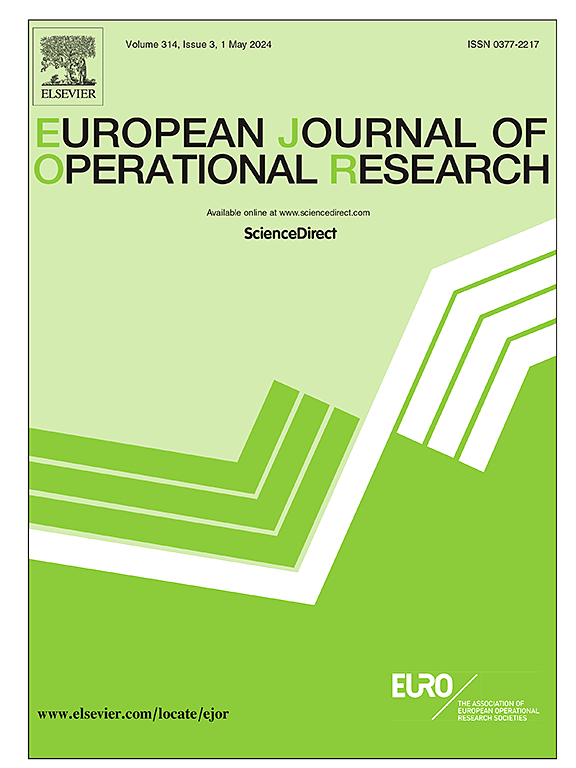求解多目标拟团问题
IF 6
2区 管理学
Q1 OPERATIONS RESEARCH & MANAGEMENT SCIENCE
引用次数: 0
摘要
给定一个简单无向图G,拟团是G的密度至少为γ(0<γ≤1)的子图。找到一个最大的拟团已经从两个不同的角度解决了:(i)最大化顶点基数给定的边密度;(ii)最大化给定顶点基数的边密度。然而,当没有关于基数和密度的先验偏好信息时,更自然的方法是从多目标角度考虑问题。引入多目标拟团(MOQC)问题,该问题旨在通过同时最大化顶点基数和边密度来寻找拟团。为了有效地解决这一问题,我们探讨了MOQC问题、其单目标对应问题和双目标优化问题之间的关系,以及MOQC问题和准团的几个性质。我们提出了一种使用约束标量化的基线方法,并引入了一种两阶段策略,该策略在第一阶段采用基于加权和标量化的二分类搜索,在第二阶段采用约束方法。此外,我们提出了一种三相策略,该策略结合了两阶段使用的二分类搜索和基于顶点度的局部搜索,采用新颖的充分条件来评估准团效率,然后在最后阶段引入一个约束。在合成稀疏图和真实稀疏图上的实验结果表明,将二分类搜索和局部搜索结合起来,结合准团效率的评估机制,使得三相策略在运行时间和产生新的高效准团的能力方面成为解决稀疏图中MOQC问题的有效方法。本文章由计算机程序翻译,如有差异,请以英文原文为准。
Solving the Multiobjective Quasi-clique Problem
Given a simple undirected graph , a quasi-clique is a subgraph of whose density is at least . Finding a maximum quasi-clique has been addressed from two different perspectives: maximizing vertex cardinality for a given edge density; and maximizing edge density for a given vertex cardinality. However, when no a priori preference information about cardinality and density is available, a more natural approach is to consider the problem from a multiobjective perspective. We introduce the Multiobjective Quasi-clique (MOQC) problem, which aims to find a quasi-clique by simultaneously maximizing both vertex cardinality and edge density. To efficiently address this problem, we explore the relationship among MOQC, its single-objective counterpart problems, and a bi-objective optimization problem, along with several properties of the MOQC problem and quasi-cliques. We propose a baseline approach using -constraint scalarization and introduce a Two-phase strategy, which applies a dichotomic search based on weighted sum scalarization in the first phase and an -constraint methodology in the second phase. Additionally, we present a Three-phase strategy that combines the dichotomic search used in Two-phase with a vertex-degree-based local search employing novel sufficient conditions to assess quasi-clique efficiency, followed by an -constraint in a final stage. Experimental results on synthetic and real-world sparse graphs indicate that the integrated use of dichotomic search and local search, together with mechanisms to assess quasi-clique efficiency, makes the Three-phase strategy an effective approach for solving the MOQC problem in sparse graphs in terms of running time and ability to produce new efficient quasi-cliques.
求助全文
通过发布文献求助,成功后即可免费获取论文全文。
去求助
来源期刊

European Journal of Operational Research
管理科学-运筹学与管理科学
CiteScore
11.90
自引率
9.40%
发文量
786
审稿时长
8.2 months
期刊介绍:
The European Journal of Operational Research (EJOR) publishes high quality, original papers that contribute to the methodology of operational research (OR) and to the practice of decision making.
 求助内容:
求助内容: 应助结果提醒方式:
应助结果提醒方式:


